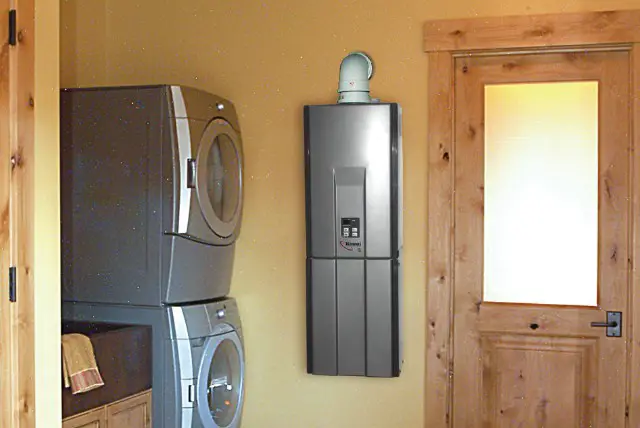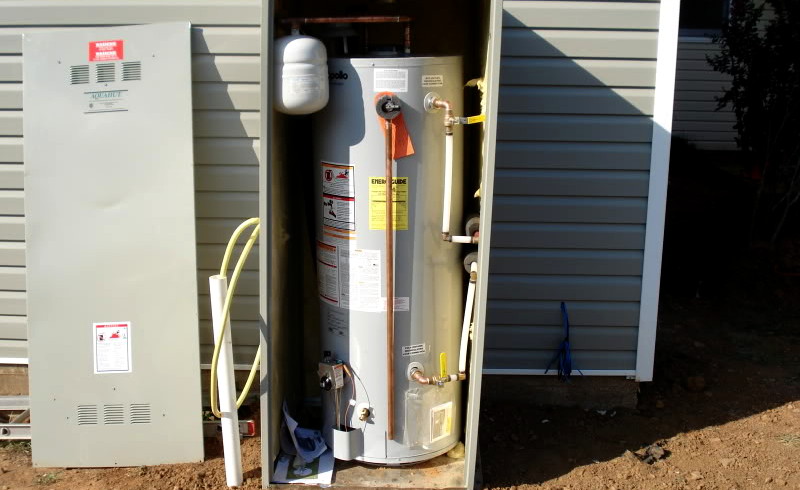Table of Content
If you have plans of leaving your house for an extended period, turn the dial to low. If you contact a plumber and find that they don’t have an installation permit, you should never allow them to install your heater. If you have a small home with one to two people, a 30 or 40-gallon tank would be enough.

Where To Buy State water heaters are available through your local plumbing professional. Whether you live in a mobile home or conventional home, your hot water heater won't last forever. Both mobile home and traditional homeowners may find they need to replace a hot water heater after eight to 12 years on average. A 30- and 40-gallon tank services one to four people, respectively. There is limited room in a mobile home, so a 50-gallon tank would typically not be possible to install. Keep in mind that one shower usually uses 20 gallons of water.
Skills Needed To Install a Water Heater
After a short period, check the discharge pipe running out of the T&P valve. This canal house on the Prinsengracht is completely renovated. Until recently we lived there ourselves and it is beautifully decorated .
The valve might be in the box, or you might have to buy one separately. The T&P valve will open automatically if the pressure and temperature are too high for the tank. An inline pressure gauge is also essential for pressure monitoring. If you don’t have a pressure-reducing valve in your home, you can have a professional install one for you. You can check the pressure of your house using a pressure gauge.
Product Categories
There is no strapping requirements if you are installing an electric or gas tankless water heater. Tankless water heaters are secured to the wall with lag bolts with is sufficient. Place the discharge pipe from your T&P relief valve to the drain or floor. If you don’t have a drain under the pipe, you can put a bucket there to catch water dripping from your discharge pipe. Cut the pipe, so it’s less than 6-inches above your bucket or drain pan. While installing a water heater, you must make sure that you do everything according to the set standards and codes.
Water heater installation codes cover proper water hookup, device set up, wiring, and more. In houses that lack a basement or garage, it is necessary to install the water heater somewhere inside the house itself. It is often desirable to do so in a closet where it won't be visible. This is legal only under certain circumstances, however, and a permit is required when installing, replacing or repairing a water heater. Potable water heaters and hot water storage tanks shall be listed and labeled and installed in accordance with the manufacturer's instructions ...
Viking River Cruise and water levels - Amsterdam Forum
Turn on the water supply slowly and check water heater connections for any leaks. If you notice leaks, shut off your supply and then tighten the connections. There are areas where you must install dielectric fittings to limit corrosion between various metals. Your local area’s ordinances and codes detail the specifics of installations. A mobile home usually contains the water heater right next to its furnace in the utility closet.
You may end up having your mobile home condemned or face a local fine for it. Your municipal government will ask you to replace your water heater. Install the new temperature-and-pressure relief valve onto the new water heater, following the manufacturer's directions. You might be wondering what the letters on your water heater mean.
Why Aren’t Standard Water Heaters HUD-Approved?
Connect the gas supply tube to the gas control valve on the water heater as directed by the manufacturer, using gas-rated thread-seal tape. Turn on the gas supply to the water heater, and test all gas connections with a gas-leak testing solution to confirm there is no leaking. Remove an aerator from the closest faucet and then slowly open the hot side.
Identify the wall studs that are closer to the strap measurement and then drill pilot holes. If you want to prevent damages resulting from earthquakes, some areas require the installation of seismic straps. The straps hold the water tank on the wall, thus preventing it from toppling over. However, you don’t need to install seismic straps if you aren’t in an earthquake zone. You can prevent flooding by routing a pipe to a drain from the drain pan.
All mobile home water heaters will need to have straps holding them in place in the event of an earthquake or tornado. How many straps you will need, though, can vary from municipality to municipality. So, it’s best to check with your local HUD to find out what building codes say for your specific area. Water heaters must be surrounded by a certain amount of clearance, or air space, to function properly and safely.

Water heaters also require some airflow for proper ventilation and combustion. The building code requires proper airflow as per the manufacturer’s specification of the unit under installation. Depending on where you live and the location of your water heater you may be required to install a drain pan underneath your water heater. Generally drain pans are not required in garages or unfinished basements. Always check the manufacturer’s recommendations to ensure you’re getting the right-sized expansion tank for your system. The installation of a water heater requires that its pressure matches the primary water pressure.
Follow the process below to install an electric water heater the correct way. For a gas water heater, codes are similar with some exceptions. There is a national mandate that says mobile homes require HUD-approved water heaters. In theory, you absolutely can use a regular water heater in a mobile home.

The drain pan should have somewhere to attach a drain pipe that runs near the ground and out of your home to discharge water if your tank fails. For instance, you can only install a water heater in Texas if you have an installation permit. Even after you are through with the installation, the local municipality should inspect everything to ensure that you complied with the code. Make sure to check your local building codes or talk to someone at your local building or planning department. Apart from a water heater permit, you often need a plumbing or electric permit as well. However, whether you need one depends on your location and the type of heater you intend to install.
Mobile home water heaters must meet specific standards established by the U.S. All heaters approved for use in manufactured homes carry a label indicating HUD compliance. Using a standard, non-compliant unit in a mobile home will likely run afoul of the local building code and can lead to other problems. Home insurers may not honor claims related to non-compliant water heaters, and non-compliant heaters can create roadblocks when selling a home.


No comments:
Post a Comment